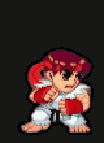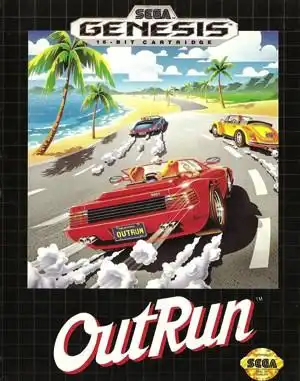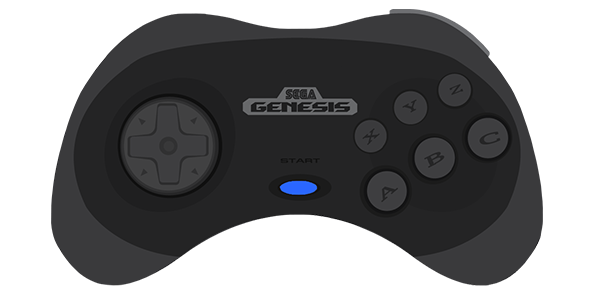The mid-90s home console landscape was a battleground, and for many of us, the Sega Genesis (or Mega Drive, depending on where you lived) was our champion. While it delivered countless hours of platforming and action, it also brought the arcade experience home. Among the most sought-after conversions was Sega's own legendary driving game, OutRun.
Bringing the sun-drenched, high-speed thrills of the arcade OutRun to the 16-bit Sega Genesis hardware was no small feat. The arcade original utilized Sega's "Super Scaler" technology, capable of displaying incredibly fast, smooth scaling sprites that made the road rush towards you with breathtaking realism for the time. Replicating that on a home console required clever programming and some inevitable compromises. But did the Genesis port capture the heart of the arcade classic? Let's fire up that Testarossa and find out.
The Genesis Port: A Home Conversion Story
Arcade ports to home consoles in the 80s and 90s were always a gamble. Sometimes they were spot-on, other times... well, let's just say they were different. The challenge with OutRun was immense. The arcade machine wasn't just a game; it was an experience with its hydraulic cabinet and massive screen. The core tech, the Super Scaler, was the real hurdle for home systems like the Genesis.
Hertz, the developer behind the Genesis conversion, had to recreate that scaling effect purely in software. While it couldn't match the buttery smoothness of the arcade, the Genesis version managed to deliver a convincing sense of speed and depth. It might be a touch choppier than the original, but compared to many other scaling-heavy ports of the era (looking at you, Super Thunder Blade), it holds up surprisingly well. The visual variety across the game's branching paths was largely retained, bringing those iconic landscapes – from sun-drenched beaches to snowy mountains – to your living room screen.
Cruising the Checkpoints: Gameplay on the Mega Drive
At its core, OutRun on the Sega Genesis is the same timeless experience: it's less about competitive racing and more about the pure joy of driving. You're not battling rival cars for first place; you're battling the clock and the winding road itself. Your goal is simple: reach the next checkpoint before the timer hits zero.
The controls are straightforward: accelerate, brake, and a crucial high/low gear shift. Mastering the gear shift is key. Shifting up gives you a burst of speed, essential for covering ground quickly, but it also makes you harder to control, increasing the risk of hitting traffic or roadside obstacles. A collision sends your iconic red convertible (and your passenger!) tumbling in a surprisingly comical animation, costing you precious seconds. Deciding when to push the speed and when to play it safe by downshifting or braking adds a layer of strategy that keeps the driving engaging.
The branching path system is OutRun's genius stroke. At the end of each stage, the road splits, offering you a choice of direction. These paths vary in difficulty and scenery, leading to different final destinations. With 15 unique course sections in total, you'll need multiple playthroughs to see everything the game has to offer, giving the Genesis port excellent replayability.
The Look and Sound: Graphics and Music
While the graphics took a hit compared to the arcade, the Genesis version of OutRun is still visually appealing within the context of its hardware. The bright, distinct color palettes for each stage, the scaling effect (even if not perfect), and the detailed sprites for your car and the varied traffic create a vibrant world to drive through. The sense of speed, while maybe not arcade-perfect, is still palpable as the scenery whizzes by.
But perhaps the most celebrated aspect of OutRun, and one that translated beautifully to the Genesis, is its soundtrack. The game features a selection of iconic, upbeat tunes that you choose before starting your drive. Hearing tracks like "Splash Wave," "Passing Breeze," and "Magical Sound Shower" recreated using the Genesis's FM synthesis is pure retro bliss. The unique sound of the YM2612 chip gives these familiar melodies a distinct flavor that many fans adore. The Genesis port even included an exclusive track, "Step on Beat," which fits seamlessly with the arcade classics. While some sound effects might occasionally cut out, the music more than makes up for it, perfectly setting the mood for a carefree, high-speed cruise.
Why Play OutRun on Genesis Today?
In an age where arcade-perfect ports are readily available on modern platforms, why revisit the Sega Genesis version of OutRun?
- Nostalgia: For many, this was their first, or only, experience with OutRun. Playing it on the original hardware (or via emulation) is a direct link back to those 16-bit days.
- Appreciation of the Port: It's fascinating to see how developers tackled the challenge of bringing cutting-edge arcade tech to home consoles. The Genesis port is a testament to clever optimization.
- It's Still Fun: Despite its technical limitations compared to the arcade, the core gameplay loop, the fantastic music, and the branching paths remain incredibly fun and addictive. It's a perfect pick-up-and-play title for short bursts.
- Part of the Genesis Library: It stands as one of the better racing games/driving games available on the system, a key title in the Genesis's diverse library.
Final Thoughts
The Sega Genesis port of OutRun might not be the definitive version available today, but it's a crucial piece of retro gaming history. It successfully brought the essence of Sega's groundbreaking arcade driver home, delivering exhilarating speed, iconic music, and endless replayability through its branching paths. For anyone who owned a Genesis or is simply curious about how arcade classics fared on 16-bit hardware, OutRun is an absolute must-play. It's a reminder of a time when home ports were acts of technical wizardry, and the simple joy of cruising down a digital highway, soundtrack blasting, was all you needed for a perfect afternoon.
FAQ
Q: Is the Sega Genesis version of OutRun arcade perfect? A: No, due to the technical limitations of the Genesis hardware compared to the arcade's Super Scaler technology, the graphics are not as smooth, but it's still a very good port for its time.
Q: How many stages are in OutRun on Genesis? A: There are 15 different course sections in total, arranged into 5 stages with branching paths at the end of each, leading to various final destinations.
Q: Does the Genesis port have the original OutRun music? A: Yes, the Genesis port features iconic tracks like "Splash Wave," "Passing Breeze," and "Magical Sound Shower," recreated using the system's FM synthesis, plus an exclusive track.
Q: Is OutRun on Genesis a racing game or a driving game? A: It's generally considered more of a driving game focused on reaching checkpoints against a timer, rather than racing against opponents.


